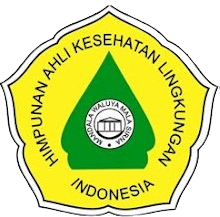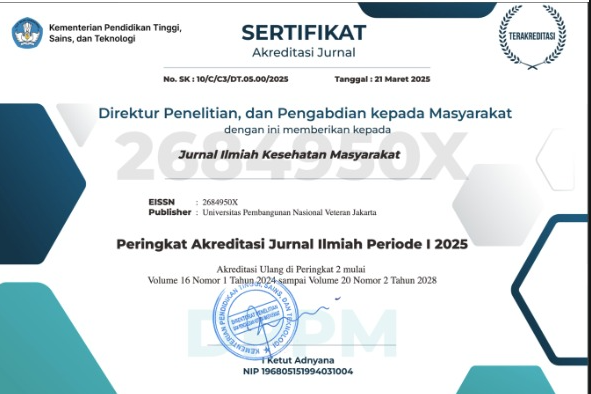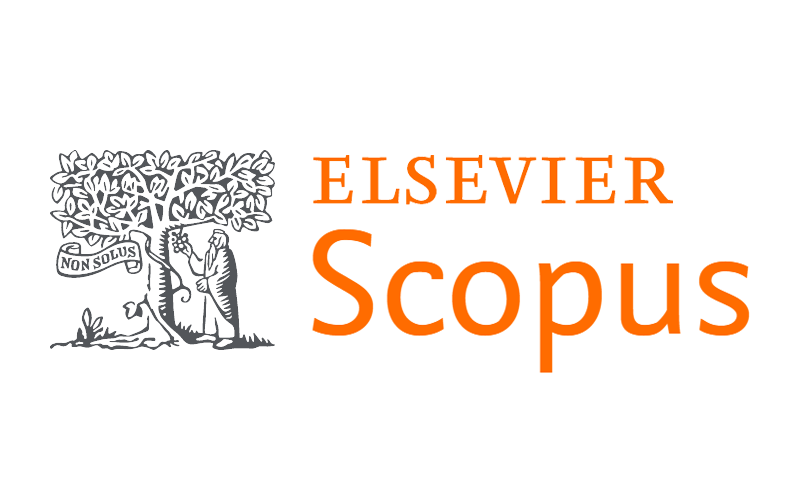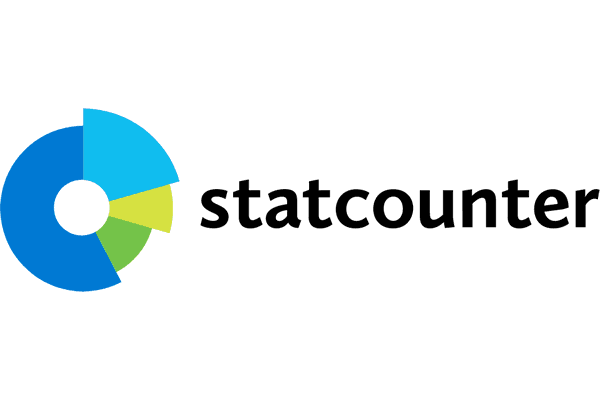Pelatihan Komunikasi Efektif untuk Meningkatkan Efikasi diri Perawat dalam Pelaksanaan Identifikasi Pasien
Abstract
Abstrak
Latar Belakang: Tujuan Penelitian adalah untuk mengetahui apakah terdapat perbedaan efikasi diri perawat dalam pelaksanaan identifikasi pasien sebelum dan sesudah pelaksanaan pelatihan komunikasi efektif. Metode: Dengan Metode quasi-eksperimen desain one group pretest-posttest. Subjek penelitian adalah 17 orang perawat laki-laki dan 28 orang perawat perempuan di rumah Sakit Kota Medan. Sebelum dan Sesudah perlakuan data dikumpulkan dengan menggunakan kuesioner yang terdiri dari 12 pernyataan untuk komunikasi efektif, 35 pernyataan untuk efikasi diri perawat. Pelatihan dilaksanakan selama 2 hari dengan menggunakan panduan komunikasi efektif dalam pelaksanaan identifikasi pasien.
Hasil: Dari hasil output Paired samples test, nilai mean paired difrence adalah sebesar -13.077. (54.62-67,69 =
-13.077, dan selisih perbedaan tersebut antara -20,326 sampai dengan -5,828 (95%). Berdasarkan nilai t hitung 3.930>t tabel 2.179 ini memiliki arti bahwa ada pengaruh pelatihan -2,990 dengan nilai signifikansi 0,002, hal ini menunjukkan bahwa setelah pelaksanaan pelatihan komunikasi efektif, ada peningkatan efikasi diri perawat. Nilai output paired samples test adalah 0.002<0.05 menyatakan bahwa ada pengaruh pelatihan komunikasi efektif terhadap peningkatan efikasi diri, hal ini juga didukung dengan nilai koefisien korelasi sebesar 0.350 dengan nilai signifikansi sebesar 0.002,ini menunjukkan tingkat hubungan yang kuat, yang berarti pemberian pelatihan komunikasi efektif memberikan efek yang besar untuk meningkatkan efikasi diri perawat dalam pelaksanaan identifikasi pasien.
Kesimpulan: Menjamin kualitas asuhan dibutuhkan sumber daya manusia (SDM) yang berkualitas juga, untuk mengawal kualitas SDM dapat dilakukan melalui: pendidikan berkelanjutan, sertifikasi, pengakuan kompetensi, supervisi, choaching, dan kegiatan pendukung lainnya.
Kata Kunci: efikasi diri, identifikasi pasien, komunikasi efektif, pelatihan, perawat
Effective Communication Training to Improve Nurses Self Efficacy in the Implementation of Patient Identification
Abstract
Background: The purpose of this study was to determine whether there were differences in nurse's self-efficacy in the implementation of patient identification before and after the implementation of effective communication training.
Method: With the quasi-experimental method of one group pretest-posttest design. The subjects of the study were 17 male nurses and 28 female nurses at Medan City Hospital. Before and After treatment the data was collected using a questionnaire consisting of 12 statements for effective communication, 35 statements for the nurse's self-efficacy. The training was carried out for 2 days using effective communication guidelines in the implementation of patient identification.
Result: From the results of the Paired samples test output, the mean paired difrence value is -13,077. (54.62-
67.69 = -13.077, and the difference between -20,326 to -5,828 (95%). Based on the value of t arithmetic 3,930> t table 2,179 this means that there is an influence of training -2.990 with a significance value of 0.002, p. this shows that after the implementation of effective communication training, there was an increase in the nurse's self-efficacy, the output value of paired samples test was 0.002 <0.05, indicating that there was an effect of effective communication training on improving self-efficacy, this was also supported by a correlation coefficient of 0.350 with a significance value of 0.002, this shows the level of strong relationships, which means the provision of effective communication training has a great effect to improve the self-efficacy of nurses in the implementation of patient identification.
Conclusion: Guarantine the quality of care required quality human resources (HR) as well, to oversee the quality of HR can be done through: continuing education, certification, competency recognition, supervision, choaching, and other supporting activities.
Keywords: self-efficacy, patient identification, effective communication, training, nurses









.jpg)








